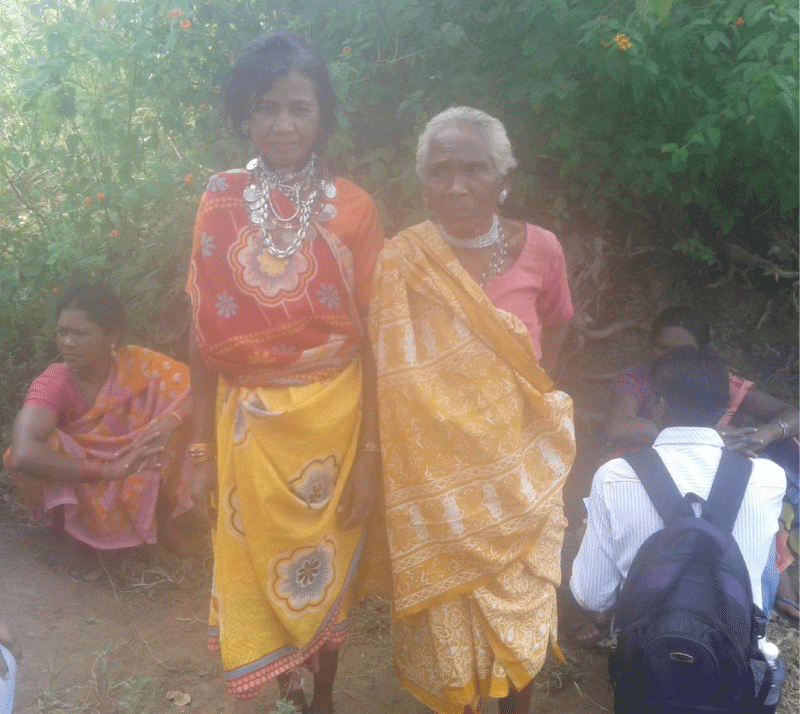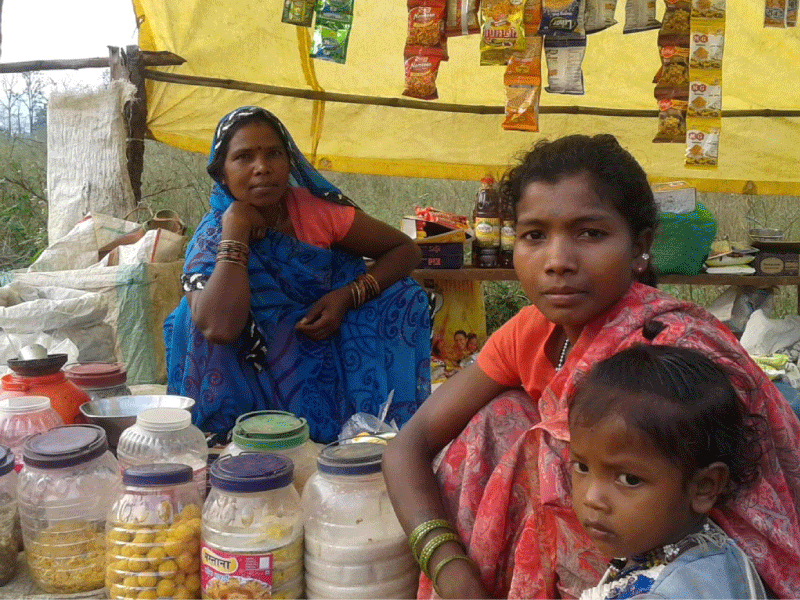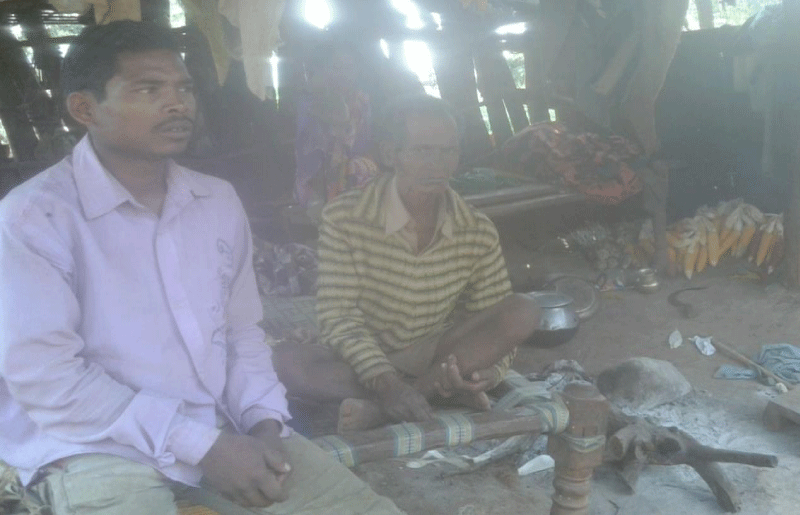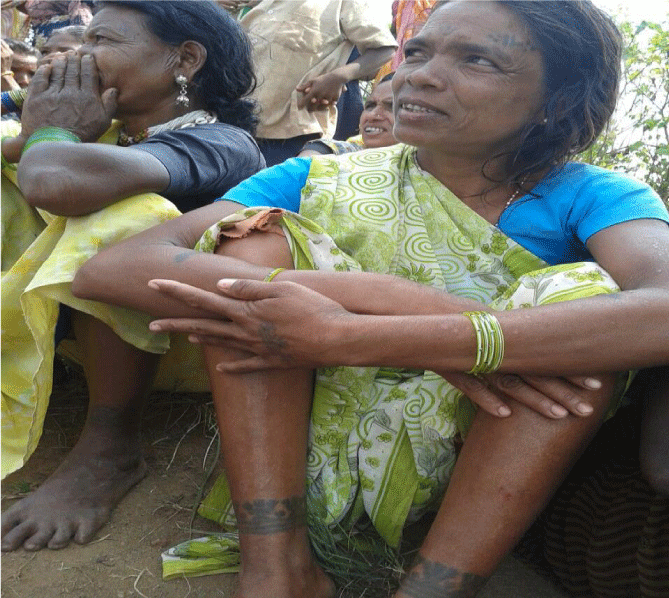More Information
Submitted: February 24, 2022 | Approved: March 15, 2022 | Published: March 16, 2022
How to cite this article: Kumar A, Thakur A. The study of social and cultural values of Baiga tribes in the state of Madhya Pradesh, in India. Arch Psychiatr Ment Health. 2022; 6: 013-016.
DOI: 10.29328/journal.apmh.1001036
Copyright License: © 2022 Kumar A, et al. This is an open access article distributed under the Creative Commons Attribution License, which permits unrestricted use, distribution, and reproduction in any medium, provided the original work is properly cited.
Keywords: Social and cultural values; Tribe; Respondent; Customs
The study of social and cultural values of Baiga tribes in the state of Madhya Pradesh, in India
Abhimanyu Kumar1* and Anjna Thakur2
1Head of Department Sociology, Govt. P.G. College, Ranikhet, Almora, Uttarakhand, India
2Assistant Professor, Department of Sociology, ICDEOL, H.P. University, Shimla, Himachal Pradesh, India
*Address for Correspondence: Abhimanyu Kumar, Head of Department Sociology, Govt. P.G. College, Ranikhet, Almora, Uttarakhand, India, Email: [email protected]
This paper is related to primary and secondary data collected from Anupur district, Madhya Pradesh. It is based on the social and cultural values of the Baiga tribes. Baiga tribe is the most backward tribe of Madhya Pradesh. These tribal people are found in this tribe are found in the following regions of Madhya Pradesh i.e. Eastern Satpura, Mandla, Dindori, Balaghat, Baghelkhand, Sidhi Janpads, Bilaspur, and even in the sarguju area of Chhatisgarh state. The tribe baiga has been defined as decedents from sorcerers or medicine men. The term baiga in the long past time was also applied in the central provinces to anyone who served as a village priest. The methodology used in this research paper is of descriptive and exploratory types. The objective of this paper is conducted through social and cultural values analysis sociological aspects with structure and functional approach.
The terms ‘culture,’ ‘values,’ and ‘customs’ are often used interchangeably, each is actually a distinct piece of the bigger picture. A custom is a ritual or other tradition that is an outward sign of the group’s cultural values. The group’s values aren’t always obvious right away - they run deep! Cultural values can be pieced together by observing the various customs that the people have passed down for generations. Culture is defined as all of a group’s guiding values and outward signs and symbols are taken together as one big whole. The cultural value that the tribal man believes is to respect your ancestors and your gods. One of the customs that acts as an outward sign of this value is to allow cows to have a natural death, rather than slaughtering them. This custom, taken with all of the other customs that his community practices, represents a larger picture of tribe culture. “These are the prevailing values of our society, which change with time, and either coincide or not with our family or personal values [1]. They constitute a complex mix of different values, and at times they contradict one another, or pose a dilemma”.
A social value of the Baiga tribe represents varied customs prevalent among them like that of tattooing, birth and death rituals. These social values are stretched in different states of India like Madhya Pradesh, Uttar Pradesh, Chhattisgarh, and Jharkhand. They follow different types of social values that are different from other tribes. The tradition of folk medicine as a social value is still followed by the Baigas [2]. The Baiga men are experts having in-depth knowledge about medicines. Various parts of plants are used as herbal medicines. For any type of body ailments like body pain, headache, cough, stomach pain, cold, fever, cut or small accident, etc, they treat them with their own medicines. There are certain rituals attached to the birth and death of the Baiga from which various social-cultural values arise. After the birth of a child, a woman is considered to be impure for a month [3]. A purification ceremony is organized where the child`s name is also finalized. Among the dead people are buried but the aged people are burnt as a sign of honor. Bodies are laid naked with their head pointing in the south direction [4]. A person of importance is buried with two; three rupees or cigarettes and tobacco are kept. In some instances, a rupee is thrust into the mouth of the dead person which is later recovered by the man`s daughter or sister who wears it in her amulet [5].
Objectives under study
The purpose of the study is the assessment of Social and cultural values of Baiga tribes and the other objective is the study of the geographical distribution of Baiga Tribes.
The tribes of Madhya Pradesh, population constitute over 20% of the state population & are mainly concentrated in the southern part of the state. The lifestyle, culture & customs of this community mostly resemble the Hindu religion though they still strongly believe in orthodox traditions. The methodology used in this research paper is of descriptive and exploratory types. The objective of this paper is conducted through social and cultural values analysis sociological aspects with structure and functional approach. A systematic methodology is an important step to any research because it directly influences the validity of the research findings.
The assessment and theoretical analysis of social and cultural values of Baiga tribes
Two types of social values one is individual values other and collective values:-Individual values:-These are the values which are related to the development of human personality or individual norms of recognition and protection of the human personality such as honesty, loyalty, veracity, and honor.
Collective values
Values connected with the solidarity of the community or collective norms of equality, justice, solidarity, and suitableness are known as collective values.
Now there is a need to discuss the socio-cultural values of Baiga tribes. Baiga is connected to Indo–the Aryan Dravidian tribe And has a specific and unique society, culture, and lifestyle. They have their own social and cultural values which are related to their traditions, customs, beliefs, and folk. The main characteristic of the Baiga tribe is their high superstition, unique socio-culture, expertise in medicine and priest work, and unique lifestyle. They struggle from English time for their existence and development where they succeed but exploited by civil society. At present, they have faced the problem of their livelihood and keeping safe of their exclusive socio-culture values. This analytical study would present the Baiga’s life, their livelihood, their unique culture, lifestyle, and their problems. In their societies, marriage proposal first comes from the parents of the bride, however, in some places; the girls are not allowed to select husbands themselves. Usually, three ceremonies precede marriage ceremonies. Baiga’s society allows divorce but a divorced woman is not allowed to remarry without the permission of the Panchayat. Polygamy is also allowed in these tribal societies. They also observe several births and funeral rites. There are certain rituals attached to the birth and death of the Baiga from which various social-cultural values arise. After the birth of a child, a woman is considered to be impure for a month. A purification ceremony is organized where the child`s name is also finalized. Among the dead people are buried but the aged people are burnt as a sign of honor. Bodies are laid naked with their head pointing in the south direction. A person of importance is buried with two; three rupees or cigarettes and tobacco are kept. In some instances, a rupee is thrust into the mouth of the dead person which is later recovered by the man`s daughter or sister who wears it in her amulet (Figures 1-4).
Figure 1: Social life of Baiga.
Figure 2: Social life of Baiga.
Figure 3: Cultural values of Baiga Tribe
Figure 4: Cultural values of Baiga Tribe.
Social-cultural importance of Tattoo
Although nowadays, body tattooing is becoming a fashion around the world, still it has some cultural significance in the tribal world. Body tattooing is very much essential and a community marker for some of the tribal groups of central India. It is related to their religion, belief system, health care practice, body decoration, social status, wealth, etc. A brief description of this social-cultural significance is given below.
Religion, belief system and Tattoo
The tribes of central India usually like to tattoo various symbols related to their totem, god, and goddess. It is a common belief among them that, these deities and ancestors protect them from different natural calamities, evil spirits, black magic, enemies, wild animals, etc. For example, the Bags female tattooed the symbol of the triangle at the sole of the right foot For the magical purpose which earth and protect woman’s foot from being bruised and cut when she walks about barefoot; Oval shape with a series of dots at the sole of the left foot for protection; Five dots and a line at the upper part of the foot, one dot on each toe and line from big toe to the little toe and it is believed that these symbols on feet will enable them to bear weight.
Health care and Tattoo
Tattooing in some specific parts of the body has some medicinal value and it is believed this tattoo helps them to cure some typical diseases. An example may be cited, the tattooing of the image of a cobra by a Baiga lady at face below to the mouth to protect them from the effects of eating any poisonous thing.
Tattoo and social status
(i) Tattoo as a Wealth and Ornament
The tattoo is treated as the wealth and ornament of the tribal. The ornaments made of metal, plastic, wood, and grass are temporary in nature and can be broken or removed at any stage of time or there is a possibility of theft. Besides, these are costly which is always not possible to afford by an economically poor tribe. On the other hand, the tattoo is not comparatively less costly than the jewels made of the above materials and is permanent in nature which does not leave the body even after death. Therefore, the tribal people treat it as wealth and like to adorn their bodies with various types of tattoo marks.
(ii) Tattoo used for Sexual Expression
Tattooing is one of the important modes to provoke sexual desire which is clear from the statement of According to them; the tattooing of body parts for sexual expression has a long history. At the time of describing the tattooing of different body parts for the said purpose, they have mentioned that “We have only to follow the fashion trends for women of Europe and North America during the past 300 years, with their history of pinched waists, ballooned hips, bustled rumps, exaggerated breasts, painted faces, and exposed bosoms, to realize the significance of body adornment for sexual provocation. Why some societies emphasize erotic adornment of women and others emphasize it in men is not yet understood”. Thus the tribal groups were using their traditional method and handmade color for this purpose, but nowadays, this tradition has been changed. Presently, it does not confine within the people of the tribal and folk communities, it enters into the life and cultures of the urban people and it becomes their important fashion which is present in their dress and body.
The theoretical analysis of geographical distribution of Baiga tribes
Tribes in India are concentrated in a certain geographical area. About two-thirds of the total tribal population of India are found in the five states of Madhya Pradesh, Jharkhand, Orissa, Bihar, and Maharashtra. The highest number of tribal’s is found in MP in Mizoram, Nagaland, Meghalaya, and Arunachal Pradesh, the tribal’s constitute 70% to 95% of the total population.
The tribal zones
The tribes in India are not found in any one particular region alone but distributed among the various states. B.S. Guha has given a threefold territorial distribution of the tribes.
1) The North and North-Eastern zone.
2) The Central or the Middle zone.
3) The Southern zone
C.B. Mamoria adds to this list as a fourth zone, consisting of Andaman and Nicobar Islands. The North and North-Eastern zone consists of the Sub-Himalayan region and the hills and mountain ranges of North Eastern frontiers of India. The tribals of this zone mostly belong to Magnolia rare and speak languages belonging to the Tibetan-Chinese family. This zone is inhabited by tribes such as Gerung, Limbo, Khasi, Garo, Naga, Mikir, and so on. It is estimated around 13% of the tribes in India are found in this zone.
The tribes of Central Zone are scattered all over the mountain-Belt between the rivers Narmada and Godavari. It includes West Bengal, Orissa, Bihar, Gujarat, MP, Maharashtra, Jharkhand, and some parts of UP. The main tribes of this zone are the Gond, Munda, Baiga, Bhil, Santal, Jurong, and so on. 80% of the tribal populations reside in this area. The South Zone falls from the river Krishna. It includes AP, Tamil Nadu, Karnataka, Kerala, and the two union territories Andaman and Nicobar Islands and Lakshadweep. Tribes of this zone are regarded as the most ancient inhabitants in India. This zone consists of the Tribes like Kota, Kurumba, Kadar, Paniyan, and so on. This zone contains around 6-5% of the total tribal population. The main tribes in Andaman and Nicobar Islands are Jar was Nikobarese and Andamanese. Based on cultural factors and cultural contacts, Ghurye classifies Indian tribes into three classes. Firstly, the groups recognized as members of fairly high status within Hindu Society; Secondly the large mass that has been partially Hinduised and come in closer contact with the Hindus; and thirdly the hill tribes, which have exhibited the power of resistance to the alien cultures that have pressed upon their border. Baiga is a tribe found in Madhya Pradesh (population 250,000). The largest number of Baigas is found in Baiga-chuk in Mandla district and the Balaghat district of Madhya Pradesh. They have sub-castes - Bijhwar, Narotia, Bharatiya, Nahar, Rai Bhaina, and Kadh Bhaina. Their population as of Census 2011 was 448,8 48. Their population as of Census 2001/2011 was 390,000. Mandla district is a Baiga tribal-dominated district. Mandla district is situated at 220 35’ 00” N. Latitude 800 21’ 00’’ E. Longitude. This District is located in hilly and forest areas of the Maikal hill range of the Satpuras, in mostly scattered habitation. The District situated in the East-Central part of Madhya Pradesh lies almost entirely in the catchment of river Narmada and its tributaries. A District with a glorious history, Mandla comprises numerous rivers and is endowed with rich forests. “Kanha National Park “Is located in this District, its world’s famous Tiger Sanctuary. One of the hottest targets for both domestic as well as foreign tourist. The extreme length of this District is about 133 km. from north to south and the extreme breadth is 182 km from east to west. It is covered a total area of 8771 Sq.km. and consists of a total population of 10, 53, 522. There are 9 Blocks, 6 Tehsils, and 1221 habitable villages in the District. This District has a total Tribal population of 5, 11, and 798 in number and a total geographical area of 8771 Kms scattered habitation in villages.
Cultural values can be pieced together by observing the various customs that the people have passed down for generations. Culture is defined as all of a group’s guiding values and outward signs and symbols are taken together as one big whole. The cultural value that the tribal man believes is to respect your ancestors and your gods. The people of this tribe are generally found in the following areas of Madhya Pradesh: Eastern Satpura, Mandla, Dindori, Balaghat, Baghelkhand, Sidhi Janpads, Bilaspur, and even in the Sarguju area of Chhatisgarh state. Baiga defines the tribe as decedents from sorcerers or medicine men. These are the values that are related to the development of human personality or individual norms of recognition and protection of the human personality such as honesty, loyalty, veracity, and honor. Values connected with the solidarity of the community or collective norms of equality, justice, solidarity, and suitableness are known as collective values. Tribes in India are concentrated in a certain geographical area. About two-thirds of the total tribal population of India are found in the five states of Madhya Pradesh, Jharkhand, Orissa, Bihar, and Maharashtra. The highest number of tribal’s is found in MP in Mizoram, Nagaland, Meghalaya, and Arunachal Pradesh, the tribal’s constitute 70% to 95% of the total population.
- Hoebel FA, Vidyarthi LP. The Tribal Culture of India Concept. Publishing Company, Delhi. 1977; 167.
- Majumdar DN. The Eastern Anthropologist. 1958; 14-21.
- Elwin V. The Baiga Reprint. Gyan Publishing House. 2007; 42-43.
- Nag DS. Tribal Economy: An Economic Study of the Baiga. Bharatiya Adimjati Sevak Sangh. 2007; 24-36.
- Kumar A. Cultural and Traditional Life of Baiga Tribes in the State of Madhya Pradesh, in India: A Brief View. Anthropol Ethnol Open Acc J. 2007; 4: 000142.
- Reddy PH, Model B. The Baigas of Madhya Pradesh: A Demographic Study, Published online by Cambridge University Press. 2001; 19-31. PubMed: https://pubmed.ncbi.nlm.nih.gov/9881117/



